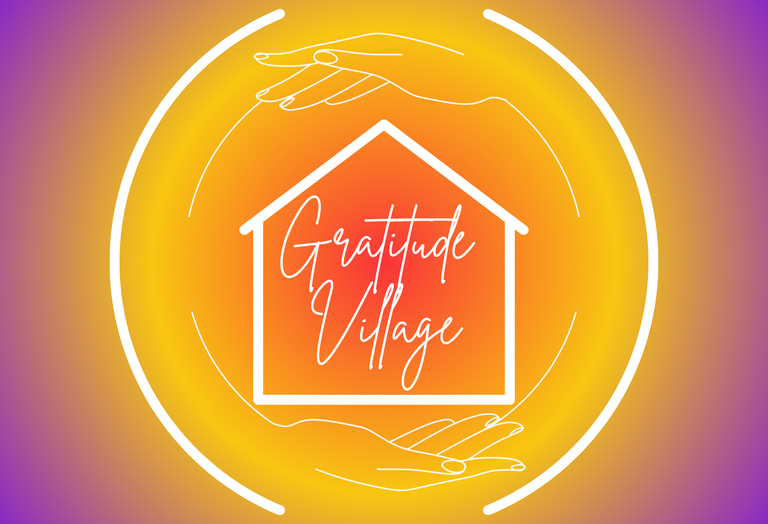Happy Holidays from Everyone at Gratitude Village!
Cohousing vs Other Forms of Intentional Living: What’s the difference?
Intentional living communities have been gaining traction worldwide, offering alternative lifestyles that emphasize community, sustainability, and shared resources. From cohousing to communes, kibbutzes to coliving, these arrangements attract people seeking stronger social connections, a deeper sense of belonging, and often, a more sustainable way of life. But while all of these intentional living forms share the goal of creating a supportive and cooperative community, each comes with its own set of values, governance structures, and ways of sharing resources. Understanding these differences can help you decide which intentional living arrangement might suit your lifestyle and values best.
Gratitude Village
12/18/20245 min read


Cohousing vs. Other Forms of Intentional Living: What’s the Difference?
Intentional living communities have been gaining traction worldwide, offering alternative lifestyles that emphasize community, sustainability, and shared resources. From cohousing to communes, kibbutzes to coliving, these arrangements attract people seeking stronger social connections, a deeper sense of belonging, and often, a more sustainable way of life. But while all of these intentional living forms share the goal of creating a supportive and cooperative community, each comes with its own set of values, governance structures, and ways of sharing resources. Understanding these differences can help you decide which intentional living arrangement might suit your lifestyle and values best.
What is Intentional Living?
Intentional living refers to a lifestyle designed around shared values and mutual support, where residents consciously choose to live together in a way that promotes community, collaboration, and often sustainability. These communities often aim to provide an antidote to the isolation of modern life by fostering deeper relationships, reducing individual resource consumption, and creating an environment that encourages cooperation over competition.
The key forms of intentional living include cohousing, communes, kibbutzim, and coliving. Each of these arrangements has its own approach to sharing resources, governance, and daily life. Let’s explore the key differences between them.
Cohousing: Private Homes, Shared Spaces, and Independent Living
Cohousing is a model of intentional living that originated in Denmark in the 1960s and has since spread around the world. Cohousing communities are designed to balance privacy and community interaction. In cohousing, residents live in private homes but share communal spaces, such as dining areas, gardens, workshops, or recreational rooms. The focus is on creating a close-knit neighborhood where residents can interact regularly, collaborate on community decisions, and support one another, but without the expectation of shared finances or complete communal living.
Key characteristics of cohousing include:
Private Ownership: Each resident or family owns or rents their own home.
Shared Spaces: Common areas, such as kitchens, gardens, and event spaces, are maintained and used collectively.
Decision-Making: Residents usually make decisions using consensus or democratic processes, with a strong emphasis on collaboration.
Financial Independence: Unlike communes or kibbutzim, residents maintain financial independence and do not pool their incomes or resources beyond what is needed for shared spaces and activities.
Cohousing is ideal for people who value privacy but want to live in a community where neighbors actively support one another. It's popular among families, retirees, and anyone seeking a balance between independence and connection.
Communes: Collective Ownership and a Shared Economy
Communes are perhaps the most well-known form of intentional living and are often associated with the 1960s and 1970s counterculture movements. A commune emphasizes communal ownership and the pooling of resources. Residents typically share all aspects of life, including housing, food, labor, and finances. Communes often operate based on the idea that all members contribute equally to the community’s well-being, whether through physical labor, skill-sharing, or other forms of contribution.
Key characteristics of communes include:
Collective Ownership: Members typically share ownership of land, homes, and resources. Personal property is often minimized.
Shared Finances: Income and resources are pooled, and the community collectively decides how to distribute them for the group’s needs.
Equal Contribution: Everyone is expected to contribute to the functioning of the community, whether through farming, cooking, cleaning, or managing communal businesses.
Communal Decision-Making: Decision-making is often done by consensus or through community votes, ensuring that everyone has a say in major decisions.
Communes appeal to people who want a deeper sense of communal living and are willing to share resources and responsibilities entirely. However, the level of shared ownership and collective decision-making required in a commune is more intense than in cohousing, making it best suited for those committed to a fully integrated lifestyle.
Kibbutzim: A Community Rooted in Shared Work and Values
Kibbutzim are intentional communities originating in Israel, historically centered on agriculture and collective labor. They began as socialist agricultural collectives, where members shared everything, including work, resources, and income. In traditional kibbutzim, there is a strong emphasis on egalitarianism, with community members working collectively to meet the needs of the entire group. Over time, however, many kibbutzim have modernized, with some transitioning to more private forms of ownership and diversified economies beyond agriculture.
Key characteristics of kibbutzim include:
Collective Labor: In traditional kibbutzim, all members worked in agriculture or other collective industries. Modern kibbutzim may have more varied forms of work.
Shared Income: Income generated by the kibbutz’s industries is shared among all members. However, many modern kibbutzim now allow individual salaries.
Communal Living: Originally, children were raised in communal children’s houses, but today most kibbutzim allow more family-oriented living arrangements.
Evolving Structures: Many kibbutzim have shifted toward privatization, allowing members more personal autonomy while still maintaining a strong sense of community.
Kibbutzim offer a unique form of intentional living, with deep roots in collective values and labor. Today, they attract individuals who appreciate the sense of history and shared work ethic but want more flexibility than what traditional communal living offers.
Coliving: Shared Spaces, Individual Lives
Coliving is a more recent trend in intentional living, largely driven by the urban housing crisis and a desire for more affordable and flexible living arrangements. Unlike cohousing or communes, coliving spaces are often structured around a more transient population, such as young professionals, digital nomads, or students. Residents typically have private bedrooms but share common spaces like kitchens, living rooms, and workspaces. Coliving spaces often emphasize convenience and flexibility, providing furnished rooms, utilities, and cleaning services as part of the rental package.
Key characteristics of coliving include:
Private Bedrooms, Shared Spaces: Residents have private sleeping areas but share communal kitchens, bathrooms, and living spaces.
Flexible Leases: Coliving spaces often offer short-term or flexible lease options, appealing to people who may not want a long-term commitment.
Minimal Commitment: While coliving emphasizes shared spaces, there is less emphasis on community decision-making or shared resources than in cohousing or communes.
Urban Focus: Coliving is most popular in cities, where housing costs are high, and people are looking for affordable ways to live in desirable urban areas.
Coliving is ideal for individuals who want the benefits of shared spaces and community without the long-term commitment of owning property or engaging in intensive communal decision-making. It’s particularly appealing to people who value convenience and flexibility, such as young professionals or people working in tech hubs.
Key Differences: Cohousing vs. Communes, Kibbutzim, and Coliving
Ownership:
Cohousing: Residents own or rent private homes and share communal spaces.
Communes: Ownership is collective, with resources and property shared among all members.
Kibbutzim: Originally collective, many have transitioned to mixed models of shared and private ownership.
Coliving: Individuals rent private rooms within a shared building, often with minimal communal ownership.
Finances:
Cohousing: Financial independence is maintained, with shared expenses for common areas.
Communes: Resources and income are pooled, with all members contributing to and benefiting from the collective fund.
Kibbutzim: Traditionally, income was shared, but modern kibbutzim may allow for individual earnings.
Coliving: Rent and utilities are shared, but personal finances are separate, and there is no pooling of resources.
Community Involvement:
Cohousing: Active community involvement is encouraged but balanced with individual autonomy.
Communes: High level of community involvement, with collective decisions and responsibilities.
Kibbutzim: Strong community engagement, historically centered on collective labor and shared values.
Coliving: Lower expectations for involvement, with a focus on convenience and shared spaces rather than deep community ties.
Conclusion: Choosing the Right Intentional Living Model
Whether you’re drawn to the independence and community balance of cohousing, the collective spirit of a commune, the historical significance of a kibbutz, or the urban convenience of coliving, each intentional living model offers a unique way of fostering connection and cooperation. Understanding these differences can help you find a living arrangement that aligns with your values, lifestyle, and long-term goals.
In a world where isolation and disconnection are increasingly common, intentional living offers a powerful solution for those seeking community, support, and a more meaningful way of life. Each model has its own strengths, and the right choice depends on the level of shared resources, decision-making, and community involvement you desire.
COMMUNITY
Join us in embracing nature, diversity and connection.
Sustainability
DIVERSITY
info@gratitudevillageco.com
720-689-4821
© 2025. All rights reserved.
AFFORDABILITY
Gratitude Village Inc. is a 501(c)3 charitable corporation that values diversity, equity, and inclusion as essential to our mission
Subscribe to our Substack
Refund Policy




Gratitude Village is a Proud Member of these organizations
